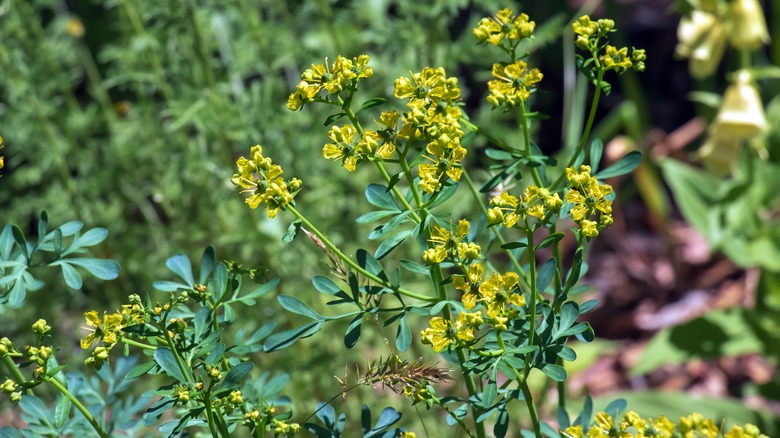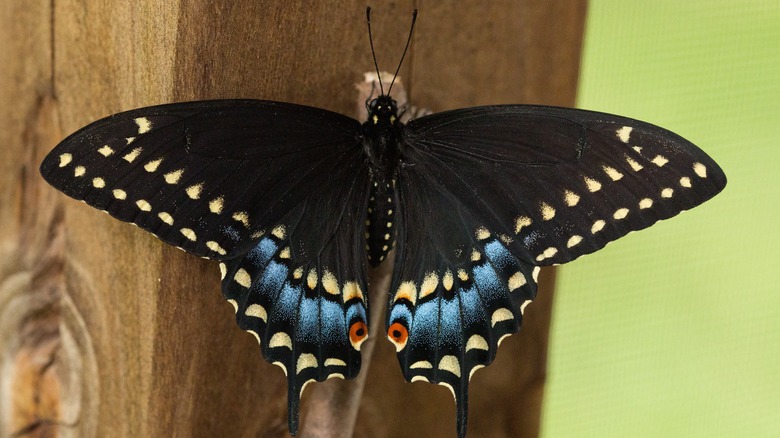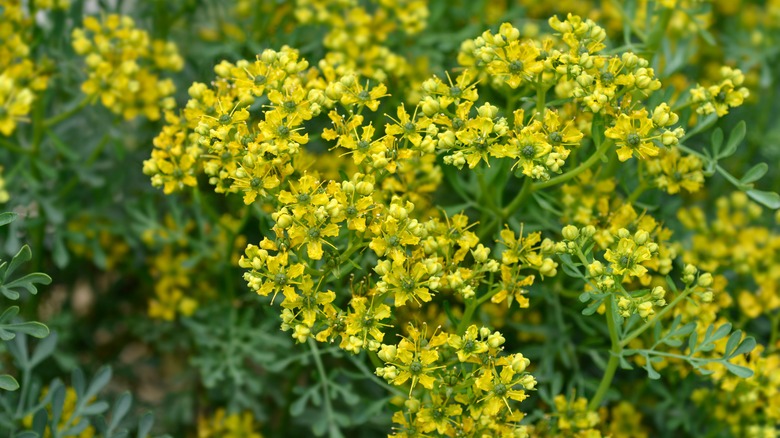Plant Rue In The Garden To Attract These Stunning Varieties Of Butterflies
If you've been looking for a plant to add to your drought-tolerant pollinator garden, look no further than rue (Ruta graveolens). While this ancient herb used to be believed to have medicinal and magical qualities, it has actually been found to be fairly toxic and should instead be left for butterflies to enjoy, as many species use it as a host plant, meaning they lay their eggs on the rue and the growing caterpillars eat the leaves. Some of the amazing butterfly species that use rue as a host plant include the black swallowtail, anise swallowtail, and giant swallowtail.
Rue is native to southeastern Europe but is hardy in USDA zones 4 through 10 where it thrives and attracts butterflies year after year without becoming invasive. While allowing swallowtails to lay their eggs on this plant may leave in missing more than a few leaves as the hungry caterpillars happily munch away, it will be more than worth it when those caterpillars mature into beautiful butterflies. In addition to acting as a host plant for multiple types of swallowtail butterflies, rue also attracts parasitic wasps, and while these wasps might be scary sounding, they actually help control aphids and other pests.
Using rue in gardens
As a host plant for swallowtails, rue can turn any garden into a pollinator garden, and thanks to its drought tolerance, rue is an ideal plant for anyone trying out the xeriscaping garden trend. It is even deer-resistant, making it ideal for unfenced and unprotected gardens. Thanks to its strong smell and ability to attract parasitic wasps, rue is also traditionally considered an excellent companion plant for roses, though the science on that is mixed.
While pollinator gardens are traditionally thought of as a bit wild looking, rue can actually make an excellent formal hedge thanks to its beautiful foliage and distinctive blueish green color. As rue can grow to about 3 feet tall and wide, be sure to give it some space to flourish and reach its full potential. Don't be alarmed if you see strange brown and white blobs that look a bit like bird feces crawling on your plants. Those are just the giant swallowtail caterpillars, sometimes called orangedogs, and soon enough they'll turn into breathtaking butterflies that will fly around your yard and garden.
Planting and caring for rue
While rue is no longer a go-to plant for many people, both seeds and young plants can be found from online shops. Rue thrives in full to part sun locations, and while it isn't particular about its soil, it does need good drainage. Rue also handles drought and low soil fertility just fine, making it an extremely low maintenance addition to gardens. Just be sure to wear gloves and long sleeves when working with rue, as its leaves are known to cause skin irritation.
Rue is generally considered hardy down to zone 4, but it sometimes needs a little extra winter protection if you are gardening in a colder zone. This can be as simple as layering mulch around it during colder months and avoiding pruning in late summer or fall. While rue dies back to its roots in the coldest parts of its range, it remains green all winter in many regions and can provide excellent winter interest.


